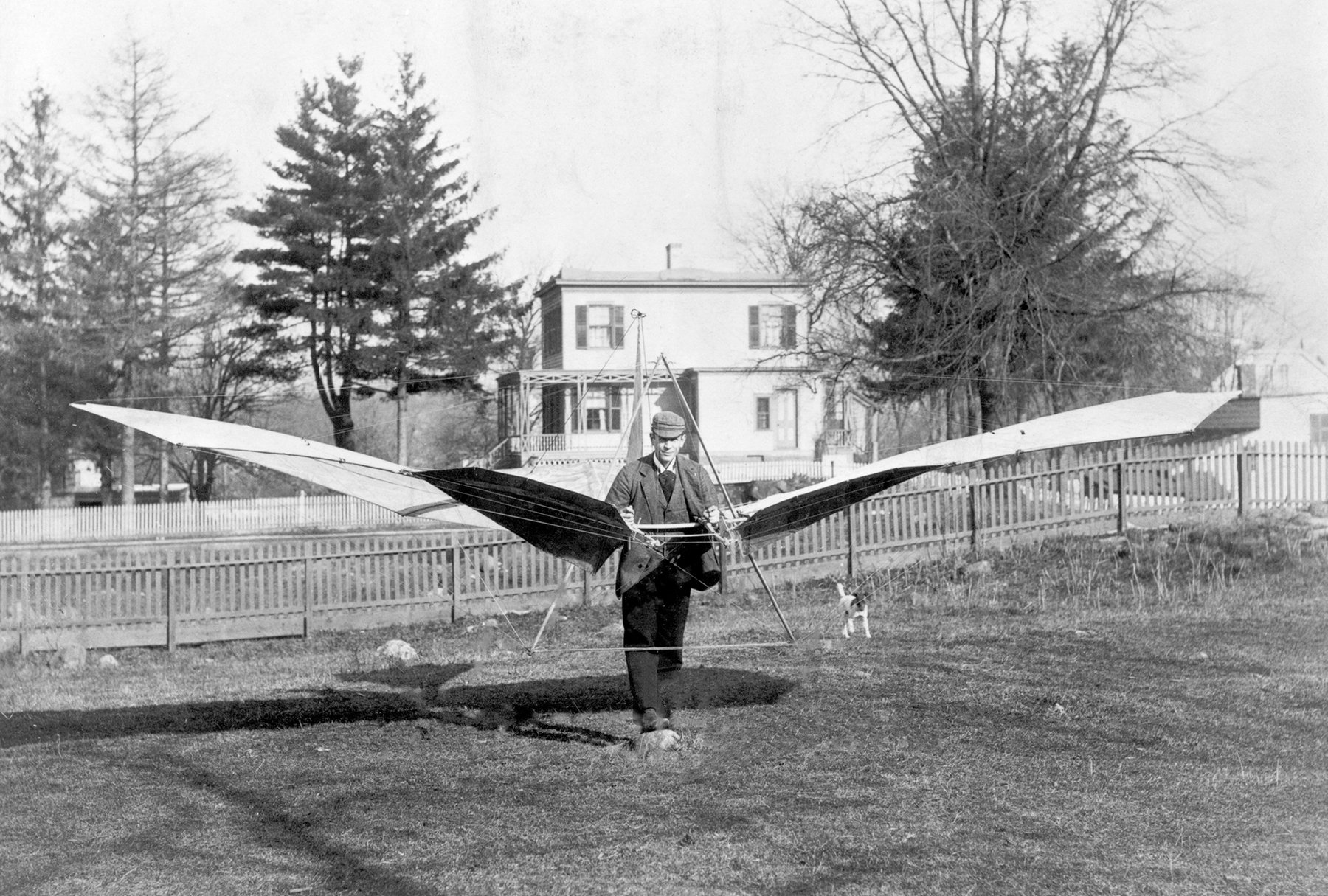Augustus Moore Herring’s Gliders
Photo from 1894, showing Augustus Moore Herring and his glider prototype, designed from Otto Lilienthal’s 1893 patent from Germany.
In the field of early aviation, there are standout figures, such as the Wright Brothers or Otto Lilienthal. There are also figures that work to push the field forward, and exist alongside and among these greats. Augustus Moore Herring is one such individual. Throughout his career as an aviation pioneer, his story is interwoven with many other pioneers of flight, while unfortunately remaining on the sidelines.
Herring began his studies into flight in 1885 as a student at the Stevens Institute of Technology in New Jersey. There he experimented with models and flying machines, and in 1893 he built his first full-size glider. He was unable to achieve flight with his glider, so he began studying the work of Otto Lilienthal from Germany. In 1894 he built another glider based on Lilienthal’s 1893 patent, which is pictured above.
In 1895, Herring was separately hired by Octave Chanute and Samuel Pierpont Langley, in both cases to build and test glider designs. After working for Chanute, Langley, and then Chanute again, he left to continue work on his own designs. In 1896 he applied for a patent of a flying machine, but it was rejected. In 1897, Herring and Chanute jointly filed for another patent of a triplane, pictured below, but this was also rejected.
In 1898, Herring built another glider and made test flights with Octave Chanute as a witness. He was unsuccessful again. Then, a couple weeks later, two witnesses claimed that Herring’s machine successfully flew, but these claims have gone unsubstantiated. Years later, in 1909, Herring teamed up with Glenn Curtiss to found the Herring-Curtiss Company. He subsequently left Curtiss and was hired by William Starling Burgess in Massachusetts. He left Burgess the next year because of disagreements with one of the partners. Herring then sued Glenn Curtiss for intellectual property theft, but he was again unsuccessful. He went on to do some work for the military, then he retired after a series of strokes.
And that’s Augustus Moore Herring’s career as an aviation pioneer. It’s an unfortunate tale filled with unsuccessful endeavors, all while surrounding himself with major figures in the field of early aviation. It’s hard to cast judgement on a story like this, because Herring was clearly passionate about human flight, and he worked with many different men to achieve his goal. He was no doubt a skilled inventor, having built many different prototypes over the years, but his story is often left to the sidelines to make way for his more successful contemporaries.
Read more about other ideas for flying machines here.


